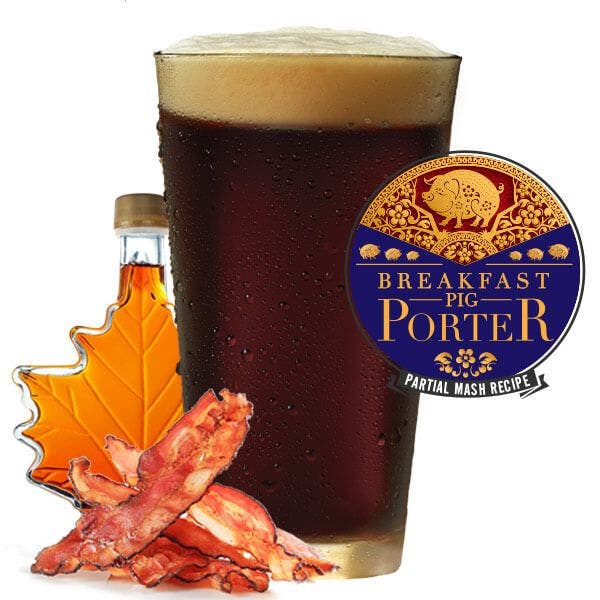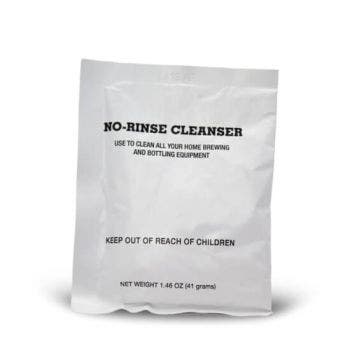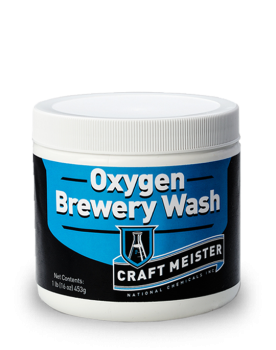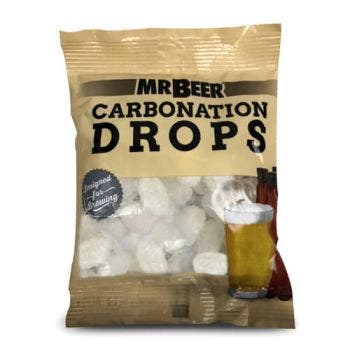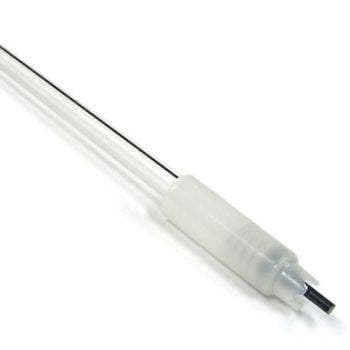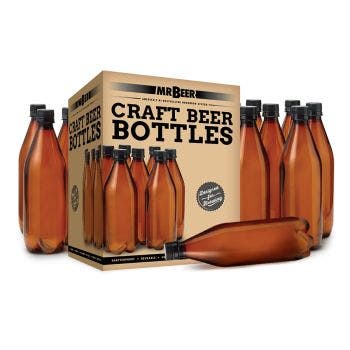Breakfast Pig Porter
Just as the name says, bacon, maple, coffee what more could you want for breakfast? How about all that in a beer? Yes, we took real bacon put it into a beer, and magic happened. You can drink this bad boy for breakfast, for lunch, for dinner and dessert, you just won't be able to get enough of it. With some sweetness from the lactose, cocoa powder, and maple syrup and just the perfect hint of bacon your taste buds will be asking for more.
What You Get
1 American Porter Brewing Extract (HME)
1 Packet of BrewMax LME Smooth
1 Packet of BrewMax LME Golden
1 Packet of BrewMax LME Pale
1 Packet of Lactose
1 Packet of Crystal Malt 60
1 Packet of Chocolate Malt
1 Packet of Honey Malt
2 Muslin Hop Sack
1 Packet of S-04 Dry Ale Yeast
1 Packet of No-Rinse Cleanser
You Provide
1oz Cocoa Powder
1oz medium to dark roast cracked coffee beans
6oz maple syrup
3/4 lb (raw weight) of bacon cooked, well blotted and torn into pieces (need for day 9 of fermentation)
Just enough distilled alcohol to cover bacon pieces in a small jar or bowl (we like bourbon)
For Fans Of
Funky Buddha Maple Bacon Porter
Brew Specs
Flavor: Malty
Original Gravity: 1.070
Final Gravity: 1.021
ABV: 6.41%
SRM: (Color): 29
IBU: (Bitterness): 40
STEP 1: SANITIZING
Cleaning is one of the most important steps in brewing. It kills microscopic bacteria, wild yeast, and molds that may cause off-flavors in your beer. Make certain to clean all equipment that comes in contact with your beer by following the directions below:
1. Fill clean keg with warm water to line mark 1 on the back, then add ½ pack (about 1 tablespoon) of No-Rinse Cleanser and stir until dissolved. Once dissolved, the solution is ready to use. Save the remaining ½ of No-Rinse Cleanser because you will need it for bottling.
2. Screw on lid and swirl the keg so that the cleaning solution makes contact with the entire interior of the keg, including the underside of the lid. Note that the ventilation notches under the lid may leak solution. Allow to sit for at least 2 minutes and swirl again.
3. To clean the spigot, open it fully and allow liquid to flow for 5 seconds and then close
4. Pour the rest of the solution from the keg into a large bowl. Place your spoon/whisk, can opener and measuring cup into the bowl to keep them cleaned throughout the brewing process. Leave them immersed for at least 2 minutes in cleaning solution prior to using.
5. After all surfaces have been thoroughly cleaned, do not rinse or dry the keg or utensils. Return lid to top of keg, proceed immediately to brewing.
STEP 2: BREWING
Brewing beer is the process of combining a starch source (in this case, a malt brewing extract) with yeast. Once combined, the yeast eats the sugars in the malt, producing alcohol and carbon dioxide (CO2). This process is called fermentation.
1. Remove the yeast packet from under the lid of the can of Brewing Extract, (not needed for this recipe) then place the unopened can and BrewMax LME's in hot tap water.
2. Place all packets of grain into a muslin sack tying it closed, then trim away excess material.
3. Add 8 cups of water to your 1 gallon or larger pot. Heat the water until it reaches a temperature between 155-160 degrees. When the water reaches the desired temperature range, add grain sack, and maintain this range for 30 minutes.
4. After 30 minutes has passed, remove grain sack, and rinse it with 2 cups of hot water using a colander or strainer while allowing the runoff to flow back into your pot. Discard grain sack.
5. Add the 3 LME packets and stir, then bring this mixture to a boil, stirring occasionally to avoid scorching. Allow mixture to boil for 5 minutes.
6. After 5 minutes add the lactose sugar and 1 ounce of cocoa powder and boil for 5 more minutes, stirring gently. Then remove the pot from heat.
7. Open the can of Brewing Extract and pour the contents into the hot mixture in your pot. Stir until thoroughly mixed. This mixture of unfermented beer is called wort.
8. Fill your fermenter with cold tap water to the mark 1 on the back. If using any other fermenter this would be approximately 1 gallon of water.
9. Pour the wort into your fermenter, and then bring the volume of the fermenter to mark 2 by adding more cold water.
10. Stir your wort mixture vigorously with your sanitized spoon or whisk.
11. Sprinkle the S-04 Dry Ale yeast packet into the keg, and screw on the lid. Do not stir.
Put your fermenter in a location with a consistent temperature between 68° and 78° F (20°-25° C), and out of direct sunlight. Ferment for 14 days.
STEP 3: Adding Extras
Adding extras is the process of adding additional ingredients to a beer which will impart more flavor and aroma in your finished brew.
- On day 9 of fermentation, cook ¾ of an lb of bacon until crispy but not burnt. Place the cooked bacon on clean paper towels to cool. Blot the bacon well and break it up into smaller pieces. Add cooled bacon to a small resealable jar along with 1-2 ounces of distilled spirits (we like bourbon or whiskey but vodka will also work) and seal the jar, shake well so that the bacon is saturated and place in the refrigerator overnight.
- On day 10 of fermentation, Sanitize the other hopsack and a small bowl, place the hop sack in the bowl to catch the liquid from the bacon. Add the soaked bacon to the sack, along with 1 ounce cracked coffee beans. Tie the sack closed and add it and the remaining bacon liquor to the fermenter, along with 6 ounces of maple syrup.
STEP4: BOTTLING & CARBONATING
After 14 days, taste a small sample to determine if the beer is fully fermented and ready to bottle. If it tastes like flat beer, it is ready. If it’s sweet, then it’s not ready. Let it ferment for 3 more days (17 total). At this point, it is time to bottle. Do not let it sit in the fermenter for longer than 24 days total.
1. When your beer is ready to bottle, fill a 1-gallon container with warm water, then add the remaining ½ pack of the No-Rinse Cleanser and stir until dissolved. Once dissolved, it is ready to use
2. Distribute the cleaning solution equally among the bottles. Screw-on caps (or cover with a metal cap if using glass bottles) and shake bottles vigorously. Allow to sit 10 minutes, then shake the bottles again. Remove caps and empty all cleaning solutions into a large bowl. Use this solution to clean any other equipment you may be using for bottling. Do not rinse.
3. Add 2 Carbonation Drops to each 740-mL bottle. For 1-liter bottles, add 2 ½ drops; for ½-liter bottles add 1 drop. Alternatively, you can add table sugar using this table as a guide.
4. Holding the bottle at an angle, fill each bottle to about 2 inches from the bottle’s top.
5. Place caps on bottles, hand tighten, and gently turn the bottle over to check the bottle’s seal. It is not necessary to shake them.
6. Store the bottles upright and out of direct sunlight in a location with a consistent temperature between 70°-76°F or 21°-24°C. Allow sitting for a minimum of 14 days. If the temperature is cooler than suggested it may take an additional week to reach full carbonation.
TIP FROM OUR BREWMASTERS
After the primary carbonation has taken place your beer is ready to drink. We recommend putting 1 bottle in the refrigerator at first for 48 hrs. After 48hrs. give it a try and if it is up to your liking put the rest of your beer in the fridge. If it does not taste quite right, leave the bottles out at room temp for another week or so. Keep following this method until your brew tastes just how you like it.
This process is called conditioning and during this time the yeast left in your beer can help clean up any off-flavors. Almost everything gets a little better with time and so will your beer

